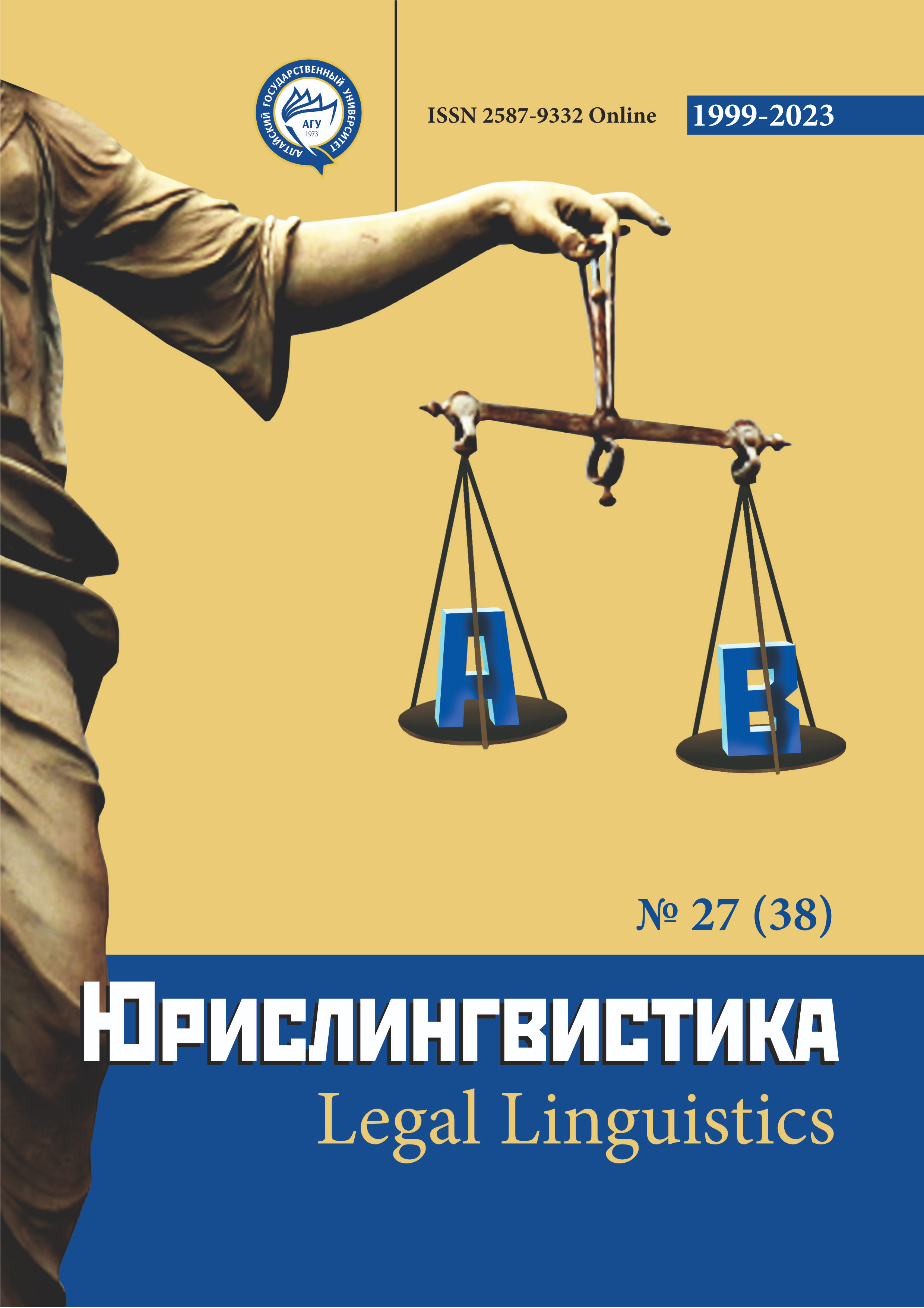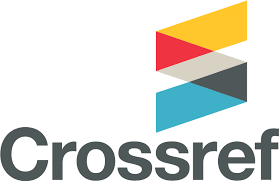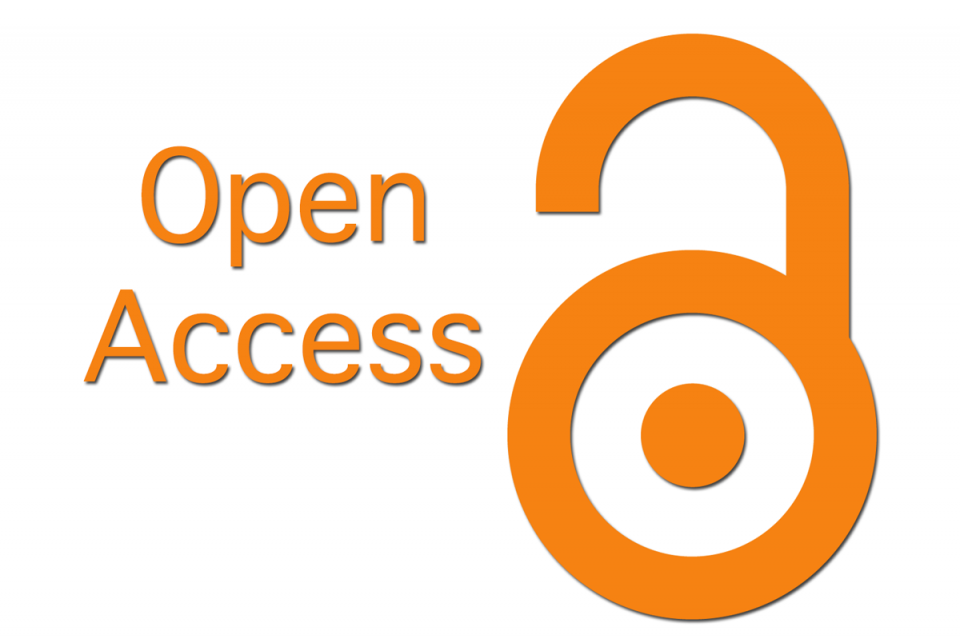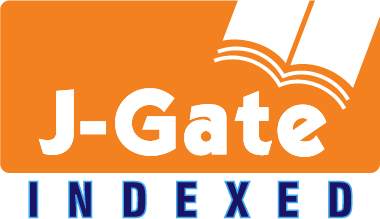The Procedure of Determining Degree of Similarity between Оbjects in Linguistic Examination
УДК 81-13 ББК 81.1
Abstract
The article describes the research procedures for determining the degree of similarity between the objects of linguistic examination. The procedure is based on the combination of qualitative and quantitative methods and the use of computer tools. The main objective of this study is to describe ways of obtaining the most reliable results, which can be verified. For carrying out of research three sets are allocated: initial object, object compared with initial, and object-construct, which includes the characteristics common for the compared sets. The objects may be interrogation protocols, texts checked for plagiarism, trademark names, newspaper publications and other. Qualitative procedures imply singling out characteristics describing objects, while quantitative procedures allow normalization of parameters identified in the objects. The extraction of characteristics is carried out by expertise, relying on the classifications accepted in linguistics. The analysis of texts with identical content is carried out by selecting identical fragments and estimating their volumes. The analysis of the similarity of trademarks is carried out on the basis of phonetic, graphic, semantic and associative parameters. The analysis of texts for possible authorship is carried out with the help of lexical, morphological and syntactic data. On the basis of the obtained numerical indicators, similarity coefficients are calculated. Characteristics that involve a selection of a yes/no answer are marked with 1 for a positive answer and zero for a negative one. Characteristics that have a numerical expression are compared using correlation coefficients and are recognized as identical when the value is 0.7 or higher. Numeric analytical procedures are generally based on the use of computer services. The numeric data obtained are represented by the coefficients of Jaccard, Sørensen, Kulczynski and Ochiai.
Downloads
Metrics
References
Christakis N. A. Let’s Shake Up the Social Sciences / New York Times. Sunday Review. July 19, 2013. URL: http://www.nytimes.com/2013/07/21/opinion/sunday/lets-shake-up-the-social-sciences.html.
Бойцов А. А., Кулешова А. А., Лизоркин А. М. Новый подход к сравнительному анализу текстов в рамках комплексной компьютерно-технической и лингвистической экспертизы / Теория и практика судебной экспертизы. – 2018. Том 13. № 3. – С. 47-52.
Красса С. И. Первый круглый стол по практикам и стандартам судебного автороведческого анализа (обзор 1) / Политическая лингвистика. – 2020. – № 6 (84). – С. 174-187.
Красса С. И. Рамки судебной лингвистической экспертизы / Язык. Текст. Дискурс: Научный альманах Ставропольского отделения РАЛК / Под ред. проф. Г.Н. Манаенко. Выпуск 17. – Ставрополь, 2018. – С. 49-88.
Новичихина М. Е., Стернин И. А. Экспертиза товарного знака: учебное пособие. Воронеж, 2013.
Новожилова Е. В. Корректорская считка (сличение) как метод судебного речеведения / Теория и практика судебной экспертизы в современных условиях: материалы VIII научно-практ. конф. Москва, 28-29 января 2021 г. – С. 233-235.
Радбиль Т. Б., Красса С. И. Методика лингвоэкспертного сопоставительного исследования фантазийных наименований товарных знаков: новые решения / Национальные и международные тенденции и перспективы развития судебной экспертизы: сборник докладов Научно-практической конференции с международным участием, г. Нижний Новгород, 19–20 мая 2022 г. – С. 210-218.
Радбиль Т. Б., Маркина М. В. Вероятностно-статистические модели в производства автороведческой экспертизы русскоязычных текстов / Политическая лингвистика. – 2019. – № 2 (74). – С. 156-166.
Сходство / Философский энциклопедический словарь. М. Гл. редакция: Л. Ф. Ильичёв, П. Н. Федосеев, С. М. Ковалёв, В. Г. Панов. 1983.
Copyright (c) 2023 Сергей Красса

This work is licensed under a Creative Commons Attribution 4.0 International License.
The authors, which are published in this journal, agree to the following conditions:
1. Authors retain the copyright to the work and transfer to the journal the right of the first publication along with the work, at the same time licensing it under the terms of the Creative Commons Attribution License, which allows others to distribute this work with the obligatory indication of the authorship of this work and a link to the original publication in this journal .
2. The authors retain the right to enter into separate, additional contractual agreements for the non-exclusive distribution of the version of the work published by this journal (for example, to place it in the university depository or to publish it in a book), with reference to the original publication in this journal.
3. Authors are allowed to post their work on the Internet (for example, in a university repository or on their personal website) before and during the review process of this journal, as this may lead to a productive discussion, as well as more links to this published work (See The Effect of Open Access).











